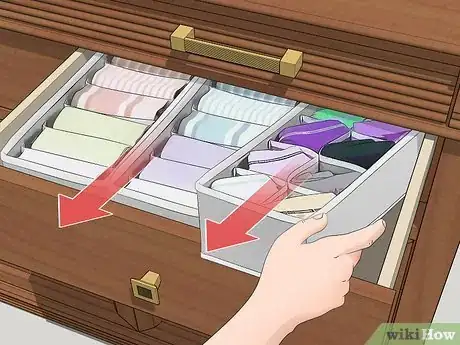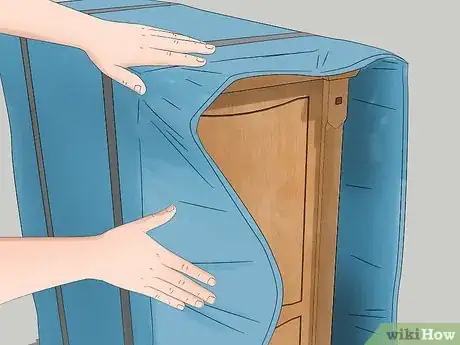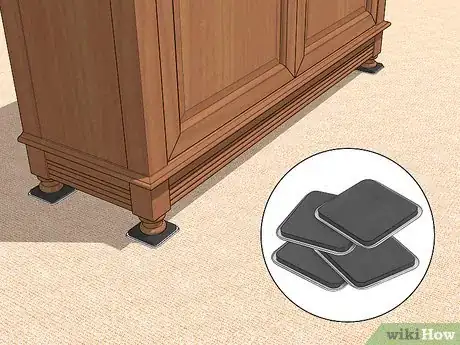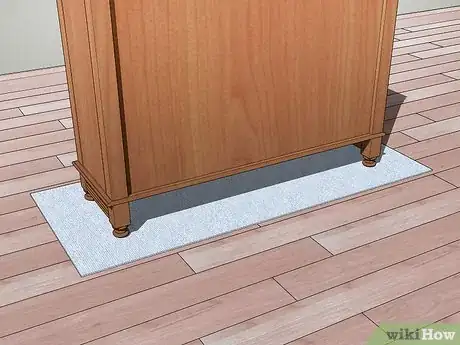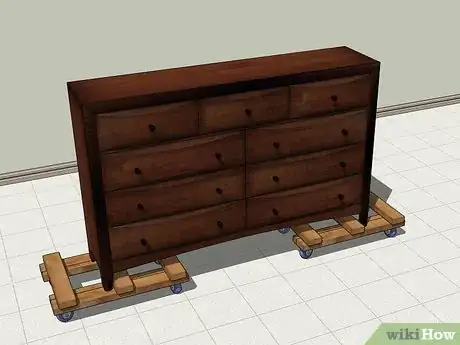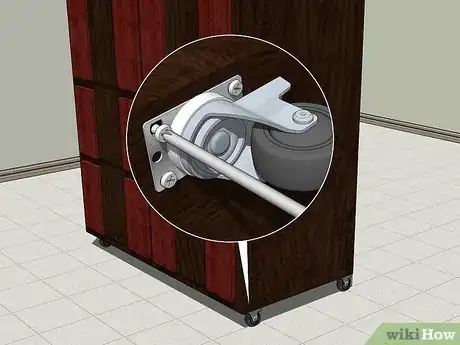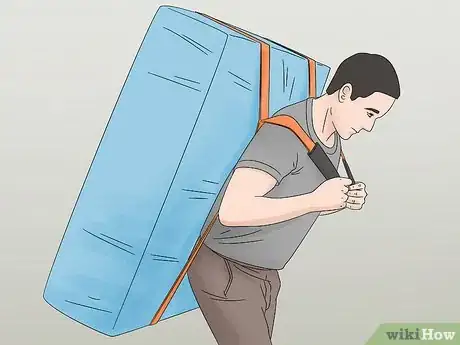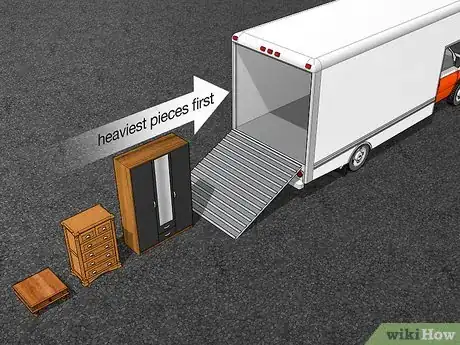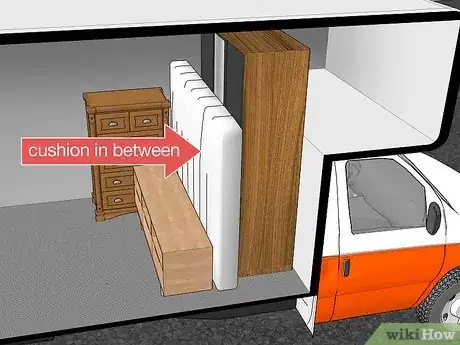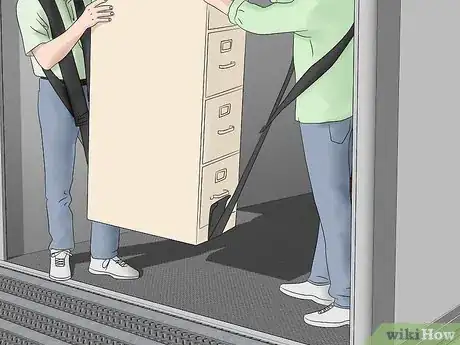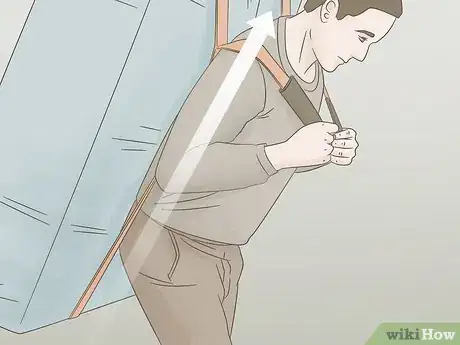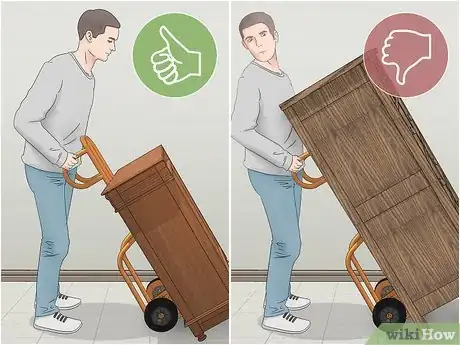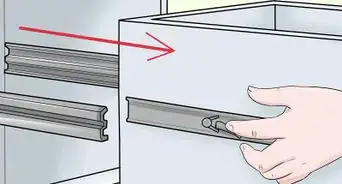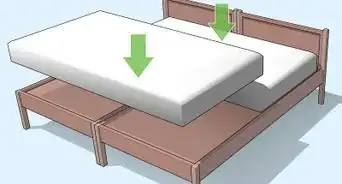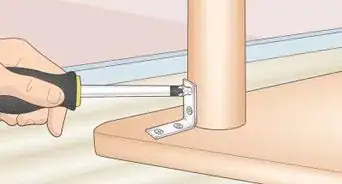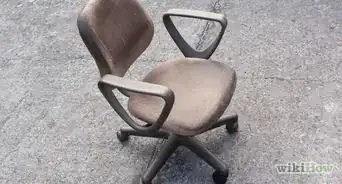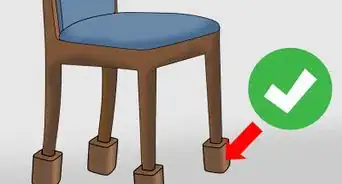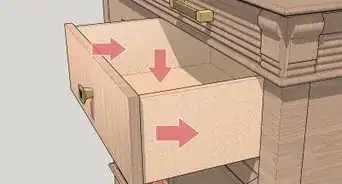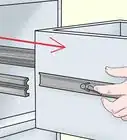This article was co-authored by Marty Stevens-Heebner, SMM-C, CPO® and by wikiHow staff writer, Hannah Madden. Marty Stevens-Heebner is a Certified Professional Organizer (CPO) and Founder of Clear Home Solutions, a home organizing and senior moving management company based in southern California. Marty is the first Certified Senior Move Manager (SMM-C) in the United States and is a Certified Aging in Place Specialist (CAPS) through the National Association of Home Builders. She is the President-Elect and is on the board of directors of the National Association for Senior Move Managers, a member of the National Association of Professional Organizers, and has been acknowledged as a Hoarding Specialist and ADHD Specialist through the Institute for Challenging Disorganization.
There are 18 references cited in this article, which can be found at the bottom of the page.
This article has been viewed 21,005 times.
Moving is a pain, and it can be made even more annoying if you have a ton of heavy furniture to move. If you don’t want to inconvenience your friends and family by asking for help, you may consider moving all of your furniture on your own. To do this safely, prepare your path to make sure there are no obstacles in your way, use furniture dollies or slides to scoot your furniture along, and set up a ramp to your truck to move heavy furniture by yourself.
Steps
Preparing and Protecting Your Furniture
-
1Remove any extra weight on top of or inside of the furniture. If you are moving a dresser or desk, take out all of the drawers and set them aside. Take off any knick-knacks or display items that are on top of your furniture and put them in a box or out of the way.[1]
- If you are moving a bed, make sure to remove the mattress before attempting to remove the frame.
-
2Break down the furniture into its smallest parts. It will be much easier to move large furniture if it is in small pieces. Break down your furniture into its smallest form by unscrewing legs off of dressers and desks, removing headboards from bed frames, and taking the leafs out of any tables.[2]
- You can break down most furniture with a screwdriver or a drill.
Tip: Keep all the hardware in a labeled bag so you can assemble your furniture in its new home.
Advertisement -
3Wrap delicate furniture in a blanket to protect it and your walls. If you have old furniture or pieces that are easily scratched, use a soft blanket to wrap the edges and sides of your furniture.[3] This is also a good idea if the piece has sharp edges to prevent wall damage. Make sure the blanket covers all of the essential parts of your furniture that could get nicked during the moving process.[4]
- You can buy furniture blankets if you want extra protection. Furniture blankets are thicker than normal blankets.
-
4Remove obstacles to create a clear path for the furniture. If you hit obstacles along the way, you run the risk of damaging your furniture or even hurting yourself. Make sure you have an entirely clear path to move through that is wide enough for your widest piece of furniture.
- You may have to remove a door from the doorway if your furniture won’t fit through it.
Using Efficient Tools
-
1Use furniture slides on carpeted surfaces. Furniture slides are small sheets of thin plastic that go underneath large pieces of furniture so you can slide them easily. Lift up one end of a dresser or other large, sturdy piece of furniture and slide a furniture slide underneath all of the legs on one side. Slide another furniture slide underneath all of the legs on the other side. Push the top of the furniture piece or use the handles attached to the furniture slides to drag or push the piece of furniture on a carpeted surface.[5]
- You may need to use more than 2 furniture slides for long pieces of furniture.
Warning: If you push too hard on a tall piece of furniture, it could topple over. Try to push from the middle or the bottom area of the furniture to avoid accidents.
-
2Put a small mat or rug underneath a piece of furniture for hardwood floors. You can slide furniture along your hardwood floors without scratching them by placing a small mat or rug underneath of your furniture. Carefully lift up one side of your furniture piece and slide the mat or rug as far as it will go. Then, lift up the other side of the furniture to slide the mat or rug the rest of the way. Make sure it is underneath all of the legs of your furniture piece.[6]
- Do not use rugs or mats that have rubber pads on the bottom, because they will not slide along your floor.
- You can also use upside down carpet squares in place of a rug or mat.
-
3Lean your furniture on a 2-wheel hand dolly. Wheels on the bottom of furniture are helpful for flat surfaces, but when you are using a ramp, grab a hand dolly. Gently slide the lip of the dolly underneath one side of the furniture as far as it will go. Slowly lean backward with the furniture until you can use the wheels of the dolly to roll your furniture.[7]
- Never use a hand dolly on furniture items that are taller than chest height.
-
4Place your furniture on 2 4-wheel furniture dollies. Large furniture like dressers and pianos can be placed on sturdy, 4-wheel furniture dollies to be rolled out of your home. If your furniture piece is long, lift up on side and place it on a furniture dolly. Then, lift up the other side of your furniture and place it on another dolly. Make sure the piece is balanced equally between your dollies so it doesn’t topple off. Push the furniture slowly through your house and into your truck.[8]
- You may need to use more than 2 furniture dollies if your piece is especially long.
-
5Attach wheels to the bottom of your furniture for tall pieces. Extra tall furniture, like dressers and armoires, may be prone to falling over if you slide or push them. Lay your tall furniture on its side and attach rolling wheels to the bottom for a more secure way to push your furniture. Lay the furniture on its side when it is in the truck so it doesn’t roll around as you are driving.[9]
- You can buy furniture wheels at more hardware stores.
-
6Use a lifting strap for small, bulky items. Lifting straps spread the weight of your furniture and give you easy to use handles or straps to put on or carry. To use a 1-person lifting strap, slide the strap underneath the base of the furniture piece. Put the straps over your shoulders or into both hands. Carefully walk with your furniture piece.[10]
- Never try to carry furniture pieces that are tall or extremely heavy with a furniture strap.
Loading Furniture into a Moving Truck
-
1Move the heaviest pieces into the truck first. If you are planning on moving large furniture items into a moving truck, put the largest and heaviest pieces in the back of the truck. Place the smaller items towards the front of the truck. This will balance the weight of the truck and make sure nothing topples over while you are driving.[11]
- It may be helpful to move all of your furniture out in front of the truck before you pack it.
-
2Fill in the space between heavy items with smaller items. The biggest risk for your furniture is how it shifts while your moving truck is in motion. To make sure your furniture stays safe, pack smaller, softer items in between your large pieces, like boxes, cushions, and pillows. Make sure that your tall items are secure.[12]
-
3Use a hydraulic lift table to lift furniture into a truck. Heavy and bulky items may be difficult to lift into a flatbed truck by yourself. Place your furniture on a hydraulic lift table near the bed of your truck. Use the foot pedal to lift the furniture up to the height of your truck. Then, gently slide the furniture out into the bed of the truck.[13]
Tip: Secure your furniture down with ropes or straps before driving away.
-
4Set up a ramp into a large moving truck. Moving trucks usually have metal ramps that pull down from the back of the truck. Park your truck on a flat surface near your home and pull out the ramp as far as it will go. Make sure the ramp is secure before you walk on it or put any furniture on it.[14]
- You may need more space than is provided in a parking spot to set up your truck ramp. Park your moving truck in an area with at least 20 feet (6.1 m) of room behind it to avoid hitting any other cars.
- If your furniture is especially large or bulky, strap it to the dolly with moving straps before you start walking.
-
5Be cautious when unloading in case anything has shifted in transit. When you start to unload your furniture, be careful when picking up items and moving them around. They may have shifted during the drive, causing them to be unstable as you move the. Go slowly and ask for help if you need it.[15]
Using Safe Lifting Techniques
-
1Bend with your knees, not your back. Stand with your feet shoulder-width apart. Bend your knees until you are squatting in front of the item you want to lift. Keep your back straight. Grab the items with both hands, holding it close to your body. Use your legs to push yourself back up to a standing position, keeping your back straight.[16]
Warning: If you have any knee injuries, avoid picking up anything too heavy.
-
2Wear closed-toed shoes and long sleeves to protect your body. Moving furniture can be tough, and there is a chance that you may drop an item on your foot or scratch yourself on a sharp corner. Protect yourself by wearing sturdy, closed-toed shoes and a long sleeved shirt or jacket.[17]
- Sneakers, hiking boots, and work boots are all good shoes to wear when moving heavy items.
-
3Avoid twisting your body as you carry heavy items to prevent injury. Holding heavy items puts a strain on your back. Avoid twisting or turning your body too sharply so you don’t hurt your muscles as you are holding something heavy. Keep your back straight and in line with your legs and neck.[18]
-
4Prevent injury by only carrying items you can safely lift. Everyone has a limit as to what they can safely carry. Do not push yourself into picking up something that you know you cannot handle just because it needs to be moved. Assess your own strength and ask for help with items that are too heavy.[19]
- If you are carrying something and you realize that it is too heavy, find a safe place to gently put it down.
-
5Avoid moving heavy items up or down stairs by yourself. Doing this alone is dangerous, even if you're using a helpful tool like a dolly. At the very least, you need a spotter or someone there in case anything goes wrong. If you need help moving heavy furniture up or down stairs, see of one of your neighbors is around and willing to assist you. Most people are glad to help out their new neighbors!
Warnings
- Be very careful when you move furniture on your own. Keep your phone on you in case you get trapped or stuck.⧼thumbs_response⧽
- Do not try to move heavy items up or down stairs on your own. The weight of the furniture could cause you to fall.⧼thumbs_response⧽
References
- ↑ https://www.youtube.com/watch?v=P8ePk1Nskio&feature=youtu.be&t=27
- ↑ https://www.youtube.com/watch?v=hoiJjs82vZ8&feature=youtu.be&t=6
- ↑ Marty Stevens-Heebner, SMM-C, CPO®. Certified Professional Organizer & Senior Move Manager. Expert Interview. 6 February 2020.
- ↑ https://www.youtube.com/watch?v=CHwKEiZSRuA&feature=youtu.be&t=182
- ↑ https://www.youtube.com/watch?v=Uw3I77sjzi8&feature=youtu.be&t=281
- ↑ https://www.youtube.com/watch?v=2qbMbSGRbWI&feature=youtu.be&t=101
- ↑ https://www.youtube.com/watch?v=_7Tqrl3XnPc&feature=youtu.be&t=18
- ↑ https://www.youtube.com/watch?v=BKAW28Bu2Q8&feature=youtu.be&t=295
- ↑ https://www.youtube.com/watch?v=HqYBYB__URo&feature=youtu.be&t=54
- ↑ https://www.youtube.com/watch?v=-wWdrcBta3o&feature=youtu.be&t=45
- ↑ https://www.youtube.com/watch?v=rjmofUZOdwo&feature=youtu.be&t=17
- ↑ https://www.youtube.com/watch?v=rjmofUZOdwo&feature=youtu.be&t=105
- ↑ https://www.youtube.com/watch?v=HqYBYB__URo&feature=youtu.be&t=373
- ↑ https://www.youtube.com/watch?v=SyidTuuusyE&feature=youtu.be&t=139
- ↑ https://www.youtube.com/watch?v=wGnY9J7Foso&feature=youtu.be&t=24
- ↑ https://myhealth.alberta.ca/Health/pages/conditions.aspx?hwid=hw206944
- ↑ https://ergo-plus.com/wp-content/uploads/WA-Handout-Proper-Lifting-Techniques.pdf
- ↑ https://ergo-plus.com/wp-content/uploads/WA-Handout-Proper-Lifting-Techniques.pdf
- ↑ https://www.mayoclinic.org/healthy-lifestyle/adult-health/multimedia/back-pain/sls-20076866?s=1
